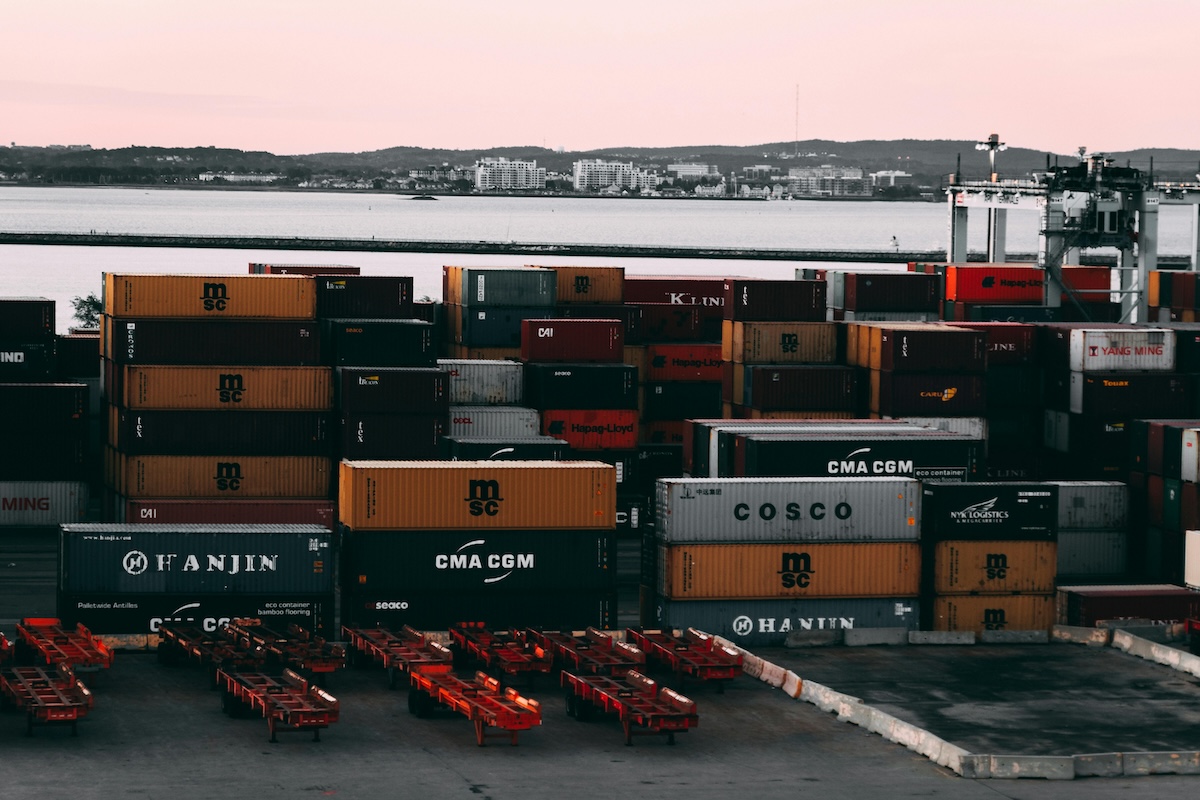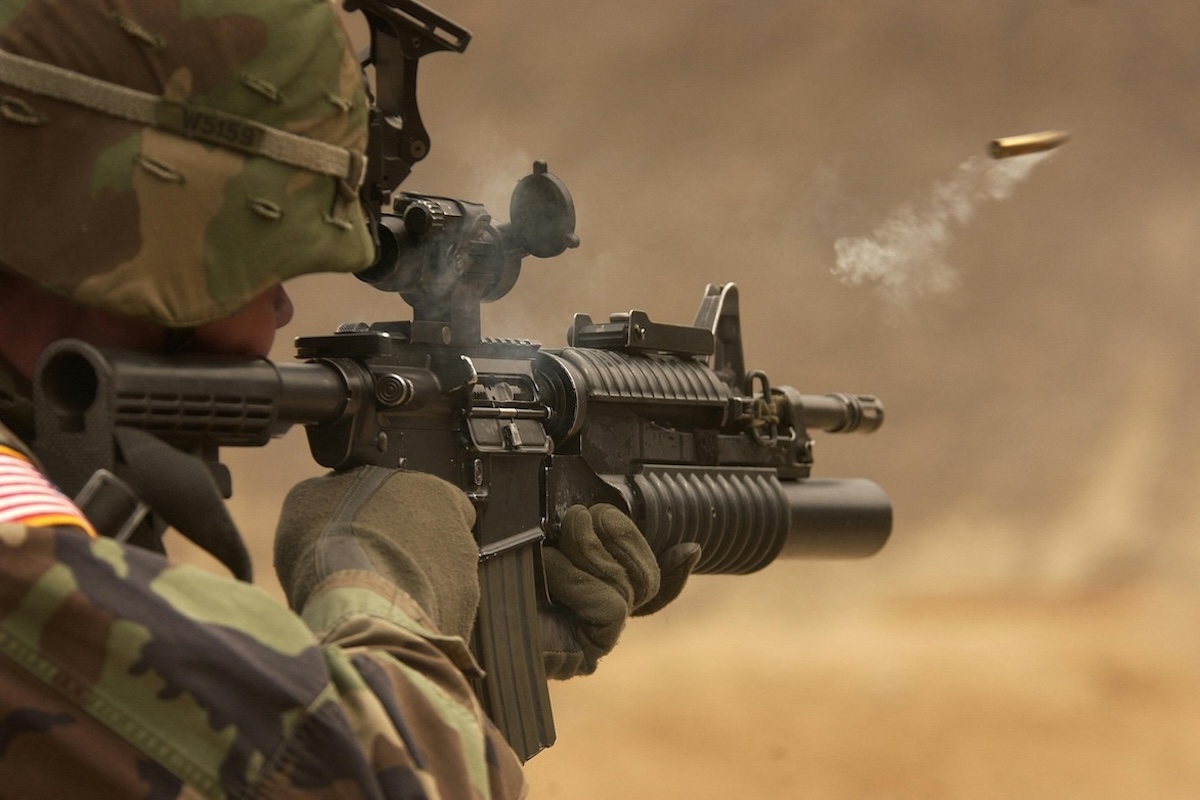What is Export Classification?

Article Summary
Export classification is the process of determining whether an item, technology, or service is subject to U.S. export control regulations and identifying its specific classification under the USML, CCL, or EAR99.
Proper classification ensures compliance with export control laws, protects national security, and helps avoid penalties, fines, or legal liabilities.
The key systems include the United States Munitions List (USML) under ITAR, the Commerce Control List (CCL) under EAR, and the EAR99 designation for items not specifically listed.
Exporters can determine classification by consulting the USML, reviewing the CCL for ECCNs, or assigning an EAR99 designation if the item is not listed.
ECCNs are specific classifications for controlled items on the CCL, while EAR99 is a catch-all designation for items not listed but still subject to export regulations.
Misclassification can lead to fines, loss of export privileges, and reputational damage, as well as risks to national security.
Exporting is a complex endeavor. In a globalized marketplace, where trade has few boundaries, it's imperative for businesses to know if their products, services, and technologies are subject to U.S. export controls. In this concise guide, we’ll explore the topics of export classification, notably what it is, why it matters, and how it can affect your business. Whether you're a newcomer or a seasoned exporter, understanding these concepts is vital for compliance and success.
So what exactly is export classification?
Export classification is the meticulous analysis undertaken to determine whether an item, which could be a physical product or part, software, technology, or service, falls under the purview of U.S. export controls. The primary purpose is to ascertain the pertinent regulations and the licensing requirements if the item is to be exported. This process is crucial on multiple levels: safeguarding national security interests, maintaining international trade obligations, and ensuring that the exporter is complying with various regulations
The Order of Review
To perform export classification effectively, it's essential to follow the Order of Review, a step-by-step process that helps determine the appropriate classification. Here's how it works:
1. Checking the United States Munitions List (USML)
The initial step in the Order of Review is a comparison of the item’s attributes against the pertinent section of the United States Munitions List (USML). The USML is a comprehensive catalog maintained by the U.S. Department of State, consisting of specific categories of items that are deemed critical to national security and therefore subject to stringent export controls.
When conducting a classification, you must compare your item against the applicable descriptions provided in the USML. If your item corresponds to one of these descriptions, it falls under the jurisdiction of the International Traffic in Arms Regulations (ITAR). In such cases, your item is classified based on the specific USML category it belongs to, and you must comply with the associated export licensing requirements.
Here’s an overview of the broad categories and types of items found within the USML export classification guidelines:
Category I - Firearms, Close Assault Weapons, and Combat Shotguns: This category includes various firearms, ammunition, and related accessories.
Category II - Guns and Armament: Items like large caliber firearms, artillery, and ammunition for military use.
Category III - Ammunition and Ordnance: Munitions, explosives, and related equipment.
Category IV - Launch Vehicles, Guided Missiles, Ballistic Missiles, Rockets, Torpedoes, Bombs, and Mines: Technologies and systems used in missile and rocket systems, including guidance systems and explosives.
Category V - Explosives and Energetic Materials, Propellants, Incendiary Agents, and Their Constituents: Materials and substances used in explosives and propellants.
Category VI - Surface Vessels of War and Special Naval Equipment: Warships, naval equipment, and related systems.
Category VII - Ground Vehicles: Military ground vehicles, including armored vehicles and tanks.
Category VIII - Aircraft and Related Articles: Military aircraft, helicopters, and associated technologies.
Category IX - Military Training Equipment: Equipment and technologies used for military training.
Category X - Protective Personnel Equipment and Shelters: Items related to personal protection, such as body armor and shelters.
Category XI - Military Electronics: Electronics and technologies used in military applications, including radar and guidance systems.
Category XII - Fire Control, Range Finder, Optical and Guidance and Control Equipment: Equipment used in targeting and guidance systems.
Category XIII - Auxiliary Military Equipment: Various military equipment and technologies not covered in other categories.
Category XIV - Toxicological Agents, Including Chemical Agents, Biological Agents, and Associated Equipment: Substances and technologies used in chemical and biological warfare.
Category XV - Spacecraft Systems and Associated Equipment: Technologies and systems used in spacecraft and space exploration.
Category XVI - Nuclear Weapons Related Articles: Technologies and items related to nuclear weapons and their components.
Category XVII - Classified Articles, Technical Data, and Defense Services Not Otherwise Enumerated: Items and services that are classified for security reasons.
Category XVIII - Directed Energy Weapons: Technologies and systems related to directed energy weapons.
Category XIX - Reserved: Reserved for future use.

Note: Please note that these categories encompass numerous subcategories and detailed entries, each specifying particular items or technologies. The USML is subject to periodic updates and revisions by the U.S. Department of State's Directorate of Defense Trade Controls (DDTC). For the most current and comprehensive information regarding the USML, it is essential to refer directly to the official U.S. Department of State DDTC website or consult with a qualified export control expert.
2. Consulting the Commerce Control List (CCL)
If an item is not described on the USML, the Order of Review dictates that the classifier should look next at the Commerce Control List (CCL). The CCL is another extensive document with multiple categories and entries but it is subject to updates and revisions by the U.S. Department of Commerce's Bureau of Industry and Security (BIS). Listed below is an overview of the categories and the types of items typically found within them:
0 - Nuclear Materials, Facilities, and Equipment: Items related to nuclear power and research, including nuclear reactors and materials.
1 - Materials, Chemicals, Microorganisms, and Toxins: Substances used in various industries, including chemicals, microorganisms, and toxins.
2 - Materials Processing: Equipment and technology used in materials processing, such as metalworking or ceramics production.
3 - Electronics: Electronic components and systems, including semiconductors, computers, and telecommunications equipment.
4 - Computers: Specific items related to computers, including hardware and software.
5 - Telecommunications and Information Security: Items related to telecommunications and information security, such as encryption software and technology.
6 - Sensors and Lasers: Devices and technology related to sensors, lasers, and imaging.
7 - Navigation and Avionics: Items used in navigation, avionics, and flight control systems.
8 - Marine: Equipment and technology used in maritime applications, including ships and underwater systems.
9 - Propulsion Systems, Space Vehicles, and Related Equipment: Items related to propulsion systems, spacecraft, and space exploration.
Note: Each of these categories contains multiple subcategories and entries that specify particular items, technologies, or software. The ECCN (Export Control Classification Number) associated with each entry determines its export control status. To obtain up-to-date and detailed information about the CCL, refer directly to the official BIS website or consult with a qualified export control expert.
Assigning an EAR99 Classification
If an item does not align with any entry in the USML or the CCL, it is classified as EAR99, the lowest level classification in the U.S. export control system. Items designated as EAR99 require an export license only in the following circumstances:
1) destinations subject to comprehensive sanctions or embargo
2) parties subject to sanctions or trade/export restrictions; or
3) if you have reason to know the item will support a restricted nuclear, missile, chemical or biological weapons proliferation activity EAR99 items still require compliance with the Export Administration Regulations (EAR) and may necessitate certain documentation and reporting depending on the destination country and the specific characteristics of the item.

Understanding the Distinctions
It is crucial to note that Export Classifications are distinct from other labeling or coding systems used in international affairs. Most notably, USML and CCL classifications are distinctly different, in form and purpose, from the Schedule B numbers and HTS codes (Harmonized Tariff System) that are employed for assigning tariffs and tracking trade data. Also, export classifications have no relation to, or bearing on, the security classifications of U.S. government document designations such as Secret, Top Secret, or other methodologies used by government agencies for security purposes.
The Importance of the Classification System
Export classification is not a bureaucratic exercise. Quite the contrary. Failing to classify your items correctly can lead to serious consequences, including fines, legal liabilities, and damage to your reputation. Here are some reasons why you should pay close attention to export classification:
- Compliance: Compliance with export controls is not optional. Failing to adhere to the regulations can result in penalties and legal actions. Correctly classifying your items helps you understand your requirements and thus stay on the right side of the law.
- National Security: Export controls exist to protect national security interests of the Unite States. Accurate classification helps prevent sensitive technologies from falling into the wrong hands which would constitute an export violation.
- Trade Relations: Proper classification and export compliance generally is essential for the United States maintaining good trade relations with other countries. Export control is an international cooperation intended to prevent the proliferation of weapons, notably those capable of mass destruction.
- Risk Mitigation: By classifying your items correctly, you will understand the requirements and risks associated with exporting them. This allows you to make the correct actions in accordance with the export regulations, thereby avoid violations and penalties.
Penalties for Infractions
Understanding the consequences of non-compliance is essential for all exporters. Export control violations carry substantial penalties, including:
- Monetary Fines and Civil Penalties: Companies convicted of export control violations face substantial fines, frequently surpassing multimillion-dollar thresholds.
- Criminal Prosecution: In certain cases where specific individuals have shown willful neglect, those persons may face criminal charges, with possible penalties being fines and/or imprisonment.
- Debarment: Debarment is another possible consequence of export control violations. When a business or individual is debarred, they are prohibited from participating in export-related activities for a specified period. This means they cannot engage in exporting goods, services, or technology, and they may also lose access to government contracts.
- Loss of Export Privileges: In addition to debarment, individuals and businesses that violate export controls may lose their export privileges altogether. This means they are permanently or temporarily barred from engaging in international trade activities. Loss of export privileges can be a severe blow to businesses that rely on international markets for growth and profitability.
- Seizure and Forfeiture: In cases involving the unlawful export of controlled items, authorities can seize and forfeit the items involved. This includes physical products, assets, and any proceeds derived from the unlawful activities. Seizure and forfeiture serve to deter and punish violators while preventing them from benefiting from their illegal actions.
- Reputation Damage: Beyond legal consequences, export control violations can harm a company's reputation, leading to loss of trust among customers, partners, and stakeholders.
Key Insights
- Export Classification as Job #1: This critical first step determines which regulations apply, whether a license will be required, the reasons for control, and possible existence of exceptions or exemptions.
- USML (United States Munitions List): Following the Order of Review, the initial step in the classification process is the comparison of your item’s characteristics against the technical descriptions and parameters in the pertinent category of the United States Munitions List (USML). If the item matches a description in the USML, it is subject to the guidance in the ITAR.
- CCL (Commerce Control List): If the item is not described on the USML, the investigation moves next to the Commerce Control List (CCL). This complex listing encompasses ten categories of commercial commodities, including the so called “dual use” items that have both civilian and military applications. If described on the CCL, the item is designated with an ECCN (Export Control Classification Number) that provides specific details about the pertinent control.
- EAR99: If an item is not described on either list, it is accorded the classification of EAR99, indicating that the diligence has been conducted and the item requires only the least stringent export controls.
- Distinctiveness from Tariff Codes: Export control classifications should not be conflated with tariff codes, that is, Schedule B numbers or Harmonized Tariff System (HTS) numbers, which serve the different and distinct purposes of assigning tariff rates and facilitating data tracking in international trade endeavors.
- Irrelevance to Security Classifications: Export classifications have no relationship U.S. document security classifications, such as Secret or Top Secret, that pertain to matters of national security.
Why Choose CTP for Your Classification Needs
Export classification is a critical and complex task and making mistakes can be costly. That's why it’s crucial and cost effective to hire an experienced team that understands the nuances of U.S. export controls.
At CTP, we specialize in export classification services and can guide you through the process with precision and expertise. Our team of seasoned professionals has a deep understanding of the regulations (ITAR and EAR), the Order of Review, and the technical precision of both the USML and the CCL. By choosing CTP, you can:
- Ensure Compliance: We will classify your items accurately to ensure compliance with relevant regulations and requirements.
- Save Time and Resources: Our expertise saves you time and resources that can be devoted to growing your business.
- Mitigate Risk: We will identify and mitigate potential risks initially and prepare your company for ongoing compliance.
- Safeguard Brand Reputation: Our meticulous approach ensures that your business maintains compliant trade practices.
Final Thoughts
When international trade is ongoing or upcoming, understanding the requirements and risks is essential. Export control classification is the complex first-step, and the consequences of omission or error can be severe. By enlisting an experienced team like CTP, you get the timely and accurate determinations that lead to your subsequent compliance requirements. Don't leave this critical and complex step to chance. Trust the export classification experts at CTP to pave your path to secure and profitable exports. Contact us today.
Key Points
What is export classification, and why is it essential?
Export classification is the process of analyzing an item, technology, or service to determine its status under U.S. export control regulations. This involves identifying whether the item is listed on the United States Munitions List (USML), the Commerce Control List (CCL), or falls under the EAR99 designation. Export classification is essential because it:
- Ensures Compliance: Helps businesses adhere to U.S. export control laws.
- Protects National Security: Prevents sensitive technologies from falling into the wrong hands.
- Avoids Penalties: Reduces the risk of fines, legal liabilities, and reputational damage.
What are the key classification systems in U.S. export controls?
The U.S. export control system uses three primary classification systems:
- United States Munitions List (USML): Covers military items and technologies under the International Traffic in Arms Regulations (ITAR).
- Commerce Control List (CCL): Includes dual-use items (civilian and military applications) under the Export Administration Regulations (EAR).
- EAR99: A catch-all designation for items not specifically listed on the USML or CCL but still subject to export controls.
Each system has unique licensing requirements and restrictions based on the item’s classification.
How can exporters determine the export classification of their items?
Exporters can determine an item’s classification by following these steps:
- Check the USML: Compare the item’s attributes to the USML to see if it falls under ITAR jurisdiction.
- Review the CCL: If the item is not on the USML, check the CCL for an Export Control Classification Number (ECCN).
- Assign EAR99: If the item is not listed on the USML or CCL, it is classified as EAR99.
- Consult Experts: Seek guidance from export compliance professionals or request a classification ruling from the Bureau of Industry and Security (BIS).
What is the difference between ECCN and EAR99, and why does it matter?
- ECCN (Export Control Classification Number): A five-character alphanumeric code used to classify items on the CCL. Items with ECCNs may require a license for export depending on the destination, end-user, and end-use.
- EAR99: A designation for items not listed on the USML or CCL. EAR99 items generally do not require a license unless exported to embargoed countries or restricted parties.
Understanding the difference is critical for determining licensing requirements and ensuring compliance with export regulations.
What are the consequences of incorrect export classification?
Failing to classify items correctly can result in:
- Fines and Penalties: Significant financial consequences for non-compliance.
- Loss of Export Privileges: Companies may be barred from exporting in the future.
- Reputational Damage: Non-compliance can harm a company’s reputation and relationships with partners.
- National Security Risks: Misclassification can lead to sensitive technologies being exported to unauthorized parties.
How does export classification support compliance and risk mitigation?
Export classification helps businesses:
- Identify Licensing Requirements: Determine whether an export license is needed for a specific transaction.
- Screen End-Users and Destinations: Ensure items are not exported to restricted parties or embargoed countries.
- Maintain Accurate Records: Document classifications and licensing decisions for audits and inspections.
By following proper classification procedures, companies can mitigate risks, avoid penalties, and contribute to global security efforts.










